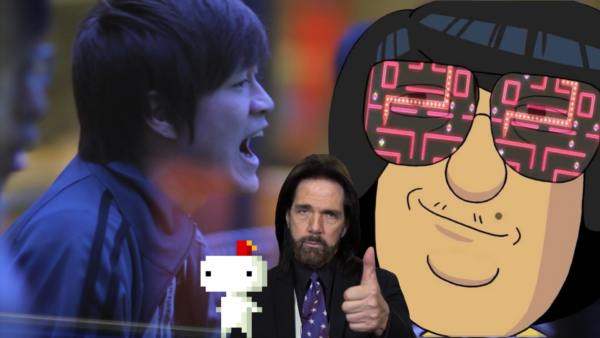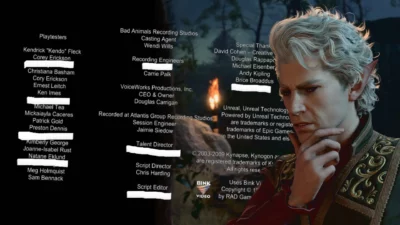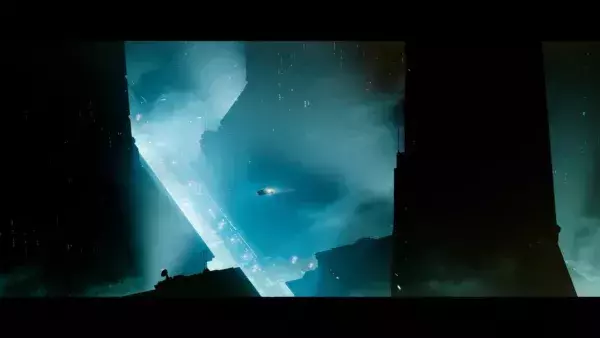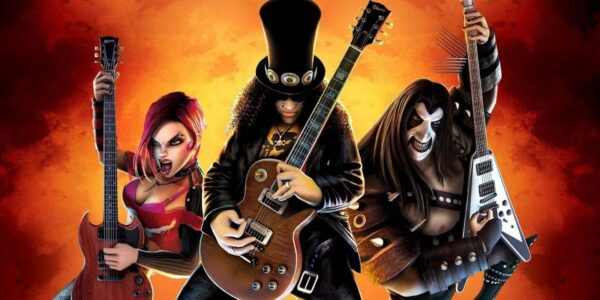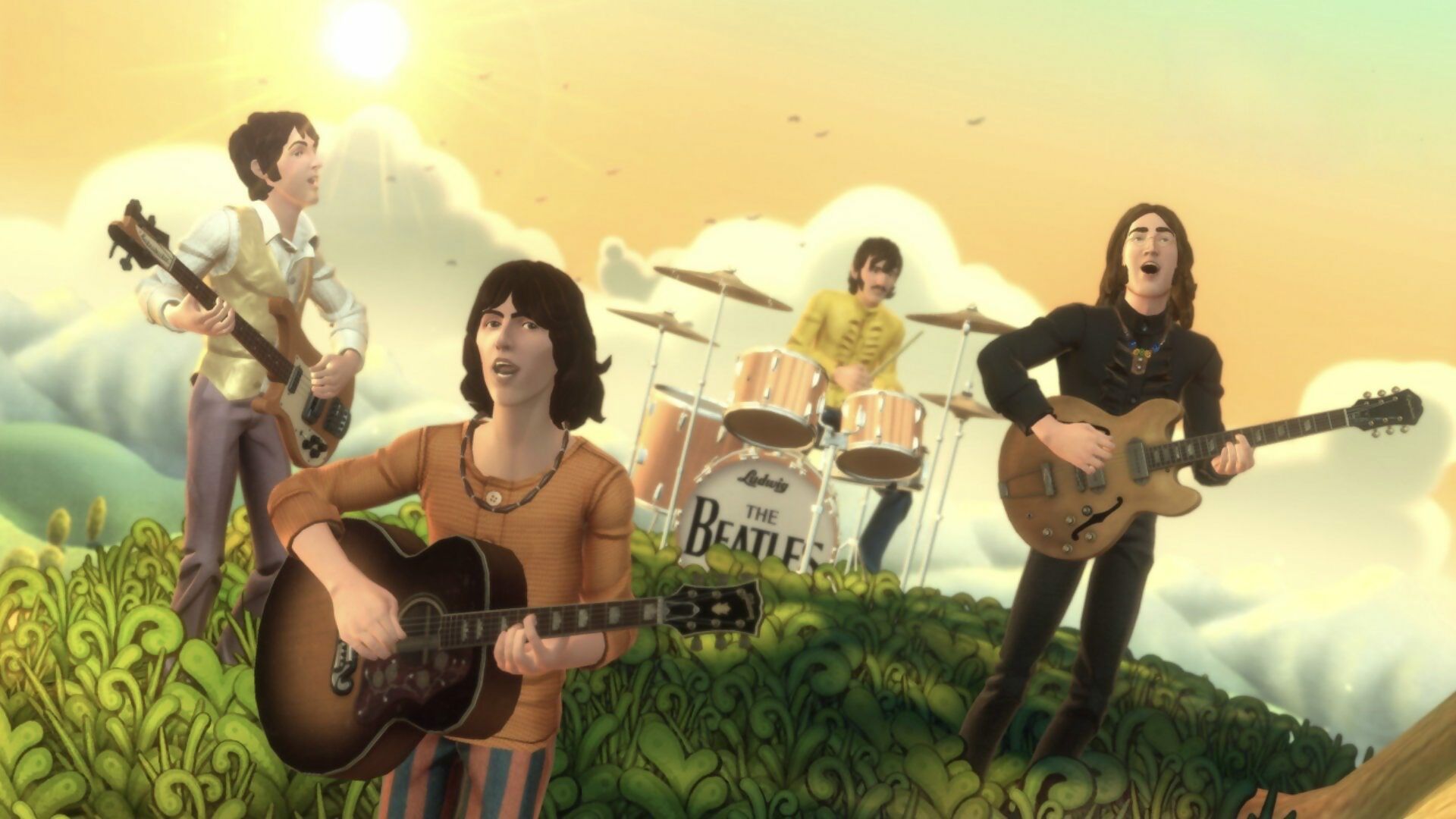
Often in designers’ minds there’s a tug of war, where investing effort in storytelling means sacrificing good gameplay, and vice versa. But this is not the case. To illuminate the subject, I find it helps to consider The Beatles’ discography, wherein we find a metaphor on which to hang a framework for thinking about what to do when design meets story. I know how mad this sounds but bear with me…
Narrative-led
In the song Yesterday, melody and music are present to augment the story painted by the words. The primary focus is on relating a sequence of events, and in a narrative-led song (or game) there’s generally only one literal interpretation of the sequences of events being recounted, though there may be many shades of emotional interpretation. Yesterday is about a man who used to feel secure in himself and his relationship, and now does not, lamenting the loss of both his partner and the man he once was. There’s no confusing this literally, though we may emotionally interpret it in several ways: is he primarily experiencing grief, regret, or wistfulness? And was their relationship a good one? Games in this vein are preoccupied with telling a particular story. This doesn’t necessarily mean the story is always the same for every player, or told chronologically.
What matters is that within any one player’s playthrough, the sequence is generally explicit, and the only game mechanics permitted are ones that engage the player with the story, just as the only instrumentation permitted in Yesterday is that which supports the words. For example, The Last of Us: Part II’s guitar minigame only exists in order to set up a devastating late-game story beat, and it could be argued that the majority of its gameplay only really exists to force the player to inhabit the minds of the characters. That might sound cynical, but excellent games in this vein would be Mass Effect, Disco Elysium, and That Dragon, Cancer.

Peter Jackson’s Get Back: a study of a group of vision-holders trying to birth new art while balancing each’s individual preferences. Essential for any medium.
Design-led
Twist and Shout sits at the other end of the spectrum as a ‘design’-led song. In this case, the song is designed for maximum fun, the forerunner of the last decade’s Ibiza-drenched tracks built around big bass drops and glitzy samples. The aggressive playing delivers this, and the lyrics are only present to augment the effect of the music. It’s meaningless out of context, there’s no causality, no sequence of events, but the words get bodies moving and hooked into the rhythm of the music, like whoops and shouts from modern DJ hypemen.
Depending on your point of view, there are either infinite valid literal interpretations of the ‘series of events’ (twisting, shouting, shaking etc.) the song is describing, or none at all. Games in this category might similarly include snippets of what we could call narrative, but these are purely in service of boosting engagement with the game’s mechanics, which themselves are in pursuit of creating in the player a particular emotional state, usually but not always some variation on ’fun’. For example, as antithesis to the guitar minigame mentioned above, Overwatch’s character backstories only exist to tempt us toward one mechanical ability set or another. This also extends to the writing in Animal Crossing, Apex Legends when I last played it circa 2019, and the vast majority of Mario titles.

The Beatles: Rock Band: Despite containing a ‘story’ mode, the band’s lives and dramas were nixed in favour of a bland chronology. Still, good game.
In harmony
Rooftop banger Get Back sits somewhere in the middle of this spectrum. The lyrics present key imagery related to the ‘feel’ of the song, and they even take the lead sometimes while giving way to the music completely at others, as if each is a voice in a duet. Both the lyrics and instrumentation express the same punchy vibe; they evoke a feeling of repudiation, that no-nonsense, ‘get outta my way’ feeling. And again, there’s no clear single interpretation of the song; is Get Back about sending yahoos back to the countryside? Or is it about the need we all have to return to the safety of our origins at times? Do either Jojo or Loretta actually return? But it clearly is about something along these lines; the range of possible literal interpretations isn’t completely boundless as in a true design-led song. In my opinion, Get Back transcends the content of its music and lyrics, because the two work together to create larger, focused meaning. By evenly balancing the powers of lyric and music, and allowing them to grow naturally together over the course of developing the song (see Peter Jackson’s excellent documentary, also called Get Back), The Beatles created two parts of an inextricable whole. But they also, most importantly, allowed the two parts to slightly contradict each other. Billy Preston’s piano solo, for example, has an inviting feel to it, like ‘getting back’ is a positive thing, whereas McCartney’s aggressive flourishes (“Get back, Loretta!”) and winking delivery (“Your mommy’s waitin’ for you”) seem to imply it’s a negative.
Similarly, Bloodborne’s forlorn, sympathetic lore and story stands occasionally at odds with its aggressive, brutal gameplay. Should I be relishing or mourning the death of the Blood-Starved Beast? How do the game’s creators feel about the evil of those who’ve been corrupted? I might also cite Hotline Miami here, or The Witness, or, due to its fourth wall breaks bizarreness defying the audience to take it literally, Death Stranding. In my opinion, the potential for creating something truly beautiful is most likely to be found in games (and songs) which balance their play and storytelling in this way, inviting myriad interpretations while retaining a focused theme and being damned entertaining.
But this is just my opinion, or rather my preference. In reality, any position on the spectrum of ludonarrative balance is valid, and whether you agree that the most riveting art comes from the balanced path or not, the existence of the spectrum is useful to acknowledge. Knowing where you’re aiming to be on that spectrum might help you to assess new ideas as they occur. If you know you’re making a design-led game, and someone starts telling you that it can’t be truly great without a Hero’s Journey laid over the top, hopefully you can be confident in dismissing that advice. But if another someone suggests that you give your game’s character auxiliary little back stories for flavour, it may be worth listening. By encouraging engagement with your gameplay, it could be worth the small investment.

Guardians of the Galaxy’s beetle hunting QTE is a concise, smart bit of storytelling.
QTEs
Button-mashing ‘quick time events’ (QTEs) are common in narrative-led games since they’re mechanics which can draw the player into a scene, but they’re themselves uninteresting and have hardly developed in decades. This isn’t necessarily a problem since they remain effective. But quick time events’ triteness misleads designers to think of all narrative-supporting mechanics as inherently boring, which creates discord between story- and gameplay-minded devs. For a great example of an innovative use of small mechanics for story purposes, see Guardians of the Galaxy’s beetle hunting ‘competition’ in its first level. It neatly creates a sense of rivalty between Star-Lord and Rocket in the player’s mind.


